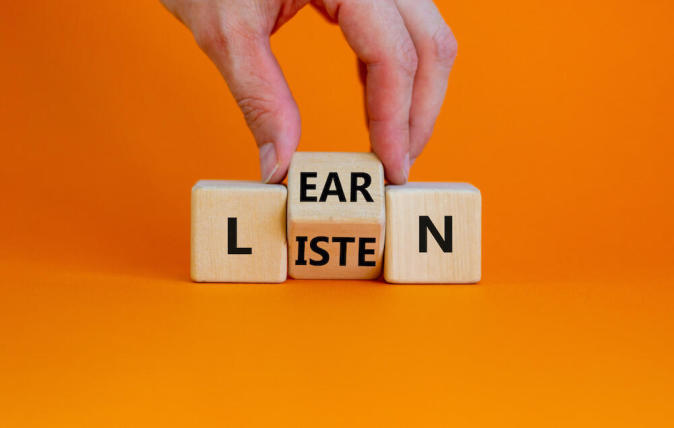July 2, 2021 by Mike Montague in Professional Development

Here are eight powerful strategies for more effective listening during conversations with prospects. The most effective sales professionals, in my experience, have higher closing ratios because they make a habit of employing all eight approaches.
- Make it about them. There is a saying you may have heard: “Most people, instead of truly listening, are simply waiting for their turn to speak.” Think of “making it all about them” as the opposite of waiting for your turn to speak. It means not just giving your conversational partner your complete, undivided attention...but also devoting the conversation itself to the buyer’s best interests, even if that means you lose some opportunity in the short term. However, by doing this, you will win something much more valuable: a long-term business relationship.
- Listen like everyone has the answer except for you. As salespeople, we may be tempted to commandeer the conversation. We may convince ourselves we know the right solution to the problem. Usually, though, we don’t even know the problem! This is not fifth grade. We don’t win points for being the first to speak up. In fact, we lose points. If we can learn to listen as though we don’t have the answer, because we know we’re still looking for it, we are much more likely to build an emotional connection with the prospective buyer.
- Adjust your listening style to fit the person you are speaking with. Every prospect is unique. Some people prefer a fairly rapid, back-and-forth dialogue; others need the opportunity to speak at length without interruption while we pay close attention to what they say. Of course, there are lots of gradations in between too. Be patient enough to figure out what suits the person you’re talking to!
- Prove you are listening by making occasional eye contact and smiling authentically. Don’t stare at people like you are memorizing their face. It freaks them out. Send positive, appropriate, and approving nonverbal cues.
- Ask good follow-up questions. These include: “Can you tell me more about that?” “Can you give me an example?” “How long has that been a problem?”
- Listen for emotional words. Whenever the other person tells you about something that frustrates them, makes them unhappy, disappoints them, worries them, or makes them angry or concerned, lean in. You are about to hear something important. Ask them to tell you more.
- Ask for details about how much the problem has cost them. Think of this as “dollarization.” The higher the dollar cost, the more likely people are to take action to solve the problem. Of course, there are plenty of “costs” that have nothing to do with money…but money is not a bad place to start.
- Take careful notes, especially about the costs of inaction. People don’t argue with their own data! Make sure you capture all the proof they offer in support of the business case for your solution.
For more on the neglected art of building listening into your sales process, check out this podcast, How To Succeed at Listening Intelligence.
COMPLIMENTARY RESOURCE DOWNLOAD
5 Secrets for Personal and Professional Growth
Share this article:

